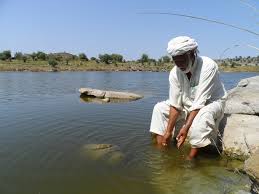By Muhammad Luqman
Unprecedented rains in Lahore and other upper parts of Pakistan have not only caused urban flooding but also resulted in human and property loss. Millions of acre feet water generated due to rains has gone down to the Arabian sea. The South Asian country has couple of reservoirs to store only 10 million acre feet water against total Monsoon water generation of 100 million acre feet every year. The dams have the water accommodation capacity to meet only 30 day needs of Pakistan’s agriculture sector against 100 day capacity in neighbouring India.
About 80pc rainfall in Pakistan occurs during the monsoon season, within 2-3 months, the storage of rainwater is the only way to address water and food security in the country.
With good showers during first week of July, Monsoon has set in. In the backdrop of drought conditions that prevailed during first half of the year, it is time to store every drop of water, from households to ponds and from ponds to dams. The Meteorology Department can help using its advanced forecasting system to gauge the quantity of rain expected, with reference to time and location.
Traditionally, big dams are constructed to store rainwater and glacial melt water to meet agriculture and energy needs.
Looking at the climate and topography, most of the rains occur in mountains followed by Potohar and then the plain areas. The range of rainfall lies between 200-1500mm per year, much of it in the short span of two months.
The rainfall on mountain tops needs big dams while the monsoons in pre-mountainous areas can be stored in small dams, mini dams and even ponds. The Punjab government had launched a program in the recent past for the construction of mini dams in the potowar region , receiving a good response from the farming community.
According to a study of Pir Mehr Ali Shah Arid Agriculture University, there is a potential of over 13,000 ponds in just four districts of Potohar. Water stored in small ponds can change the traditional agriculture of the Potohar to the production of fruits and vegetables, not only for domestic consumption but also for export to the international market.
The canal system developed by the British during 19th century and later in 1960s in the wake of Indus Water Basin Treaty, was designed to irrigate only 70pc cropping intensity which has gone up to 200pc and most of the irrigation water is being pumped. This may eventually play havoc if aquifer not properly recharged.
The rain-fed ponds also would address water recharge especially in the peripheral areas of big cities like Lahore, Islamabad and Karachi where the undue construction activity has turned the cities into concrete jungles. Just a couple of decades ago, there were drains that traversed through most of the cities in Punjab province of Pakistan. But over the years, the encroachment over the land has led to development of housing colonies over these water arteries. Now the recharging of the aquifer has become just a dream. The lack of groundwater recharge may lead to the dire consequences of lowering of the acquifer or ground water levels. Groundwater recharge can be done by various techniques such as rainwater harvesting at household level in urban areas, developing ponds in our parks and farms, plugging our flood drains and even diverting our river flows to facilitate artificial groundwater recharge. In Islamabad and Karachi, the major source of drinking water is dams like Simly, Khanpur and Rawal Dams and Hub Dam that are gone dry due to below normal rains. The most important concern is about water waste. People of Pakistan, especially those living in Punjab province should now realize that they need to save and conserve water.
The situation is further worsened as increasingly contaminated and brackish water is also left unattended, leading to groundwater pollution. Collective efforts for rainwater harvesting even in the irrigated areas by individual farmers at their farms can bring a revolution in livelihood in this country along with a solution to the groundwater recharge for future use.















